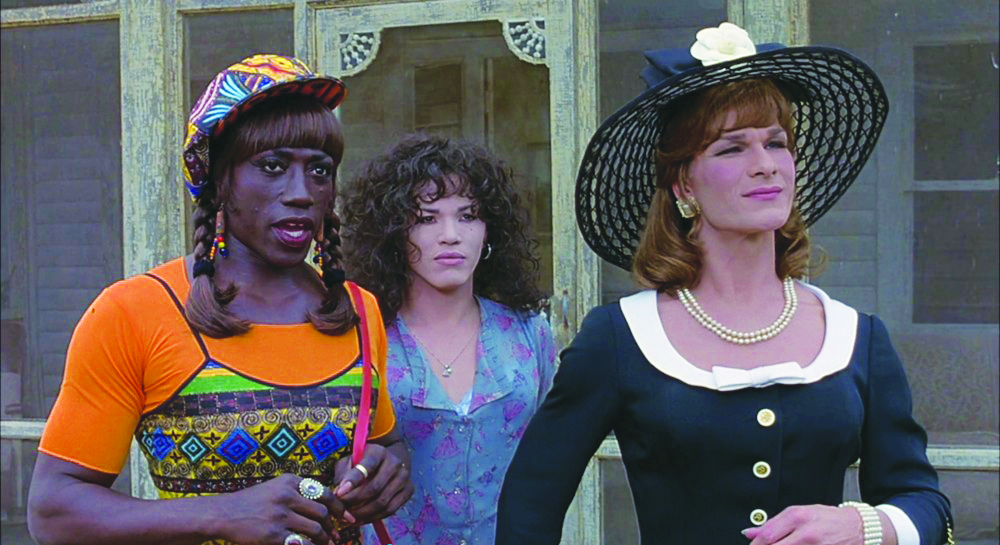Gay life has undergone a tumultuous relationship with the silver screen. At the hands of religious groups and the Hays Production Code enforcement of 1934, openly homosexual characters have often been excluded from the narrative. As such they existed for a long time in subtext, as with the portrayal of Joel Cairo in 1941’s “The Maltese Falcon.” Even when the code eventually dissolved to our modern rating system, homosexuals continued to be treated as tragic figures. In this ongoing series, I will attempt to analyze the merits, or lack thereof, of various homosexual portrayals in film.
Drag life seems to perpetually live in the comedy genre. This is no doubt a result of elements such as throwing “shade” and “reading” others, which often causes laughter and gasps depending on how audacious the rhetoric. Beeban Kidron’s 1995 outing “To Wong Foo, Thanks for Everything! Julie Newmar” is a drag film happily within the realm of comedy, all the while making commentary on the ills of the patriarchy. In the film, Patrick Swayze, Wesley Snipes and John Leguizamo play three drag queens driving to a competition in Los Angeles. Along the way they get marooned in the rural Midwest, and the road trip halts while we explore the oft-cited lack of sophistication that seemingly comes with these rustic areas. The queens, played with startling realism, set about “saving” the town: providing it with stylish flair, manners and banning several abusive male figures.
Given that the film was directed by a woman, and features its heroes as prominent gay characters, the way in which heterosexuality is addressed becomes rather interesting. While in drag, the queens are routinely preyed on by men who physically abuse their wives and degrade women. The only redeemable male figures are a young white high schooler and an older black man who owns a restaurant. It is interesting, then, to see the antagonists of the queens and women as exclusively older white men. While the queens are able to adjust the behavior of many (in a series of glorious scenes), the more violent characters are simply expelled from the society.
Despite the thoughtful exploration of gender roles, the film did manage to fail rather largely on one front. The narrative implied that queens are never out of drag, with the leads perpetually in their feminine attire, reminiscent of “Some Like it Hot.” It became difficult to wrap my mind around whether or not such a portrayal compromised the film’s progressive nature. Recognizing my status as a cisgender heterosexual male, I decided to ask someone who actually does drag.
“Considering the time, where [drag] wasn’t fully accepted, they did a pretty good job in portraying the culture. Shady, sassy and brutally honest,” said Daniel Maldonado, a senior design major who has been doing drag for two years. “There are some things that were dramatized, like being in drag 24/7, but I think that was strictly movie related.” Maldonado went on to say that other friends of his, both homosexuals and queens, felt the film was very enjoyable and could be forgiven for its misconception of parameters.
Perhaps if there were more films with a drag-centric focus, “To Wong Foo” would be judged more harshly. Yet as it stands, the narrative is largely a success. Explorations of gender, parental approval, relationships and personal identity find the film at its best. Toss in a few cameos, in the form of Quentin Crisp and Robin Williams, and you have an overall worthy and thoughtful showcase of gay life.







